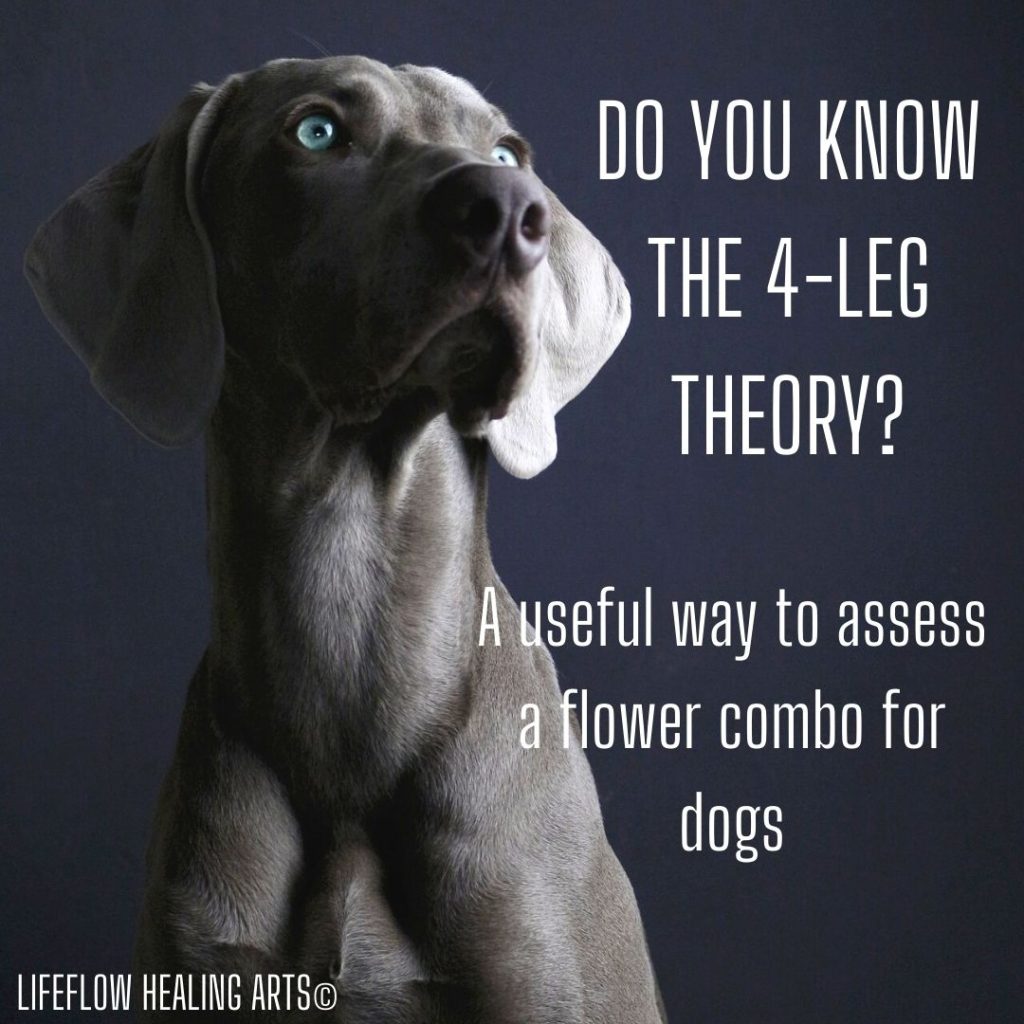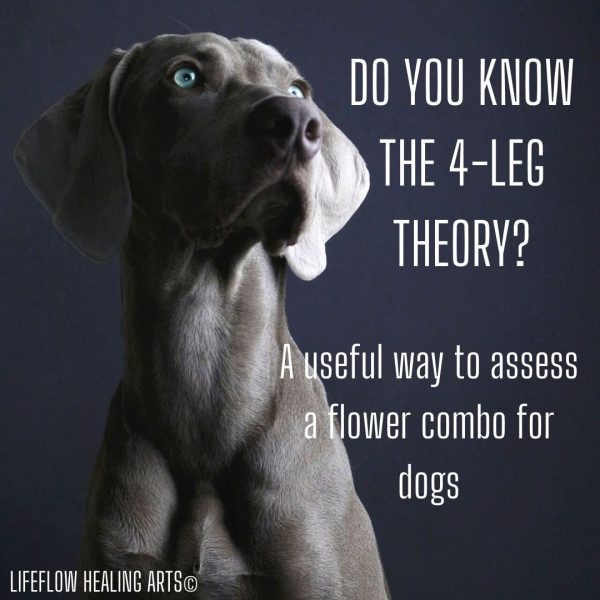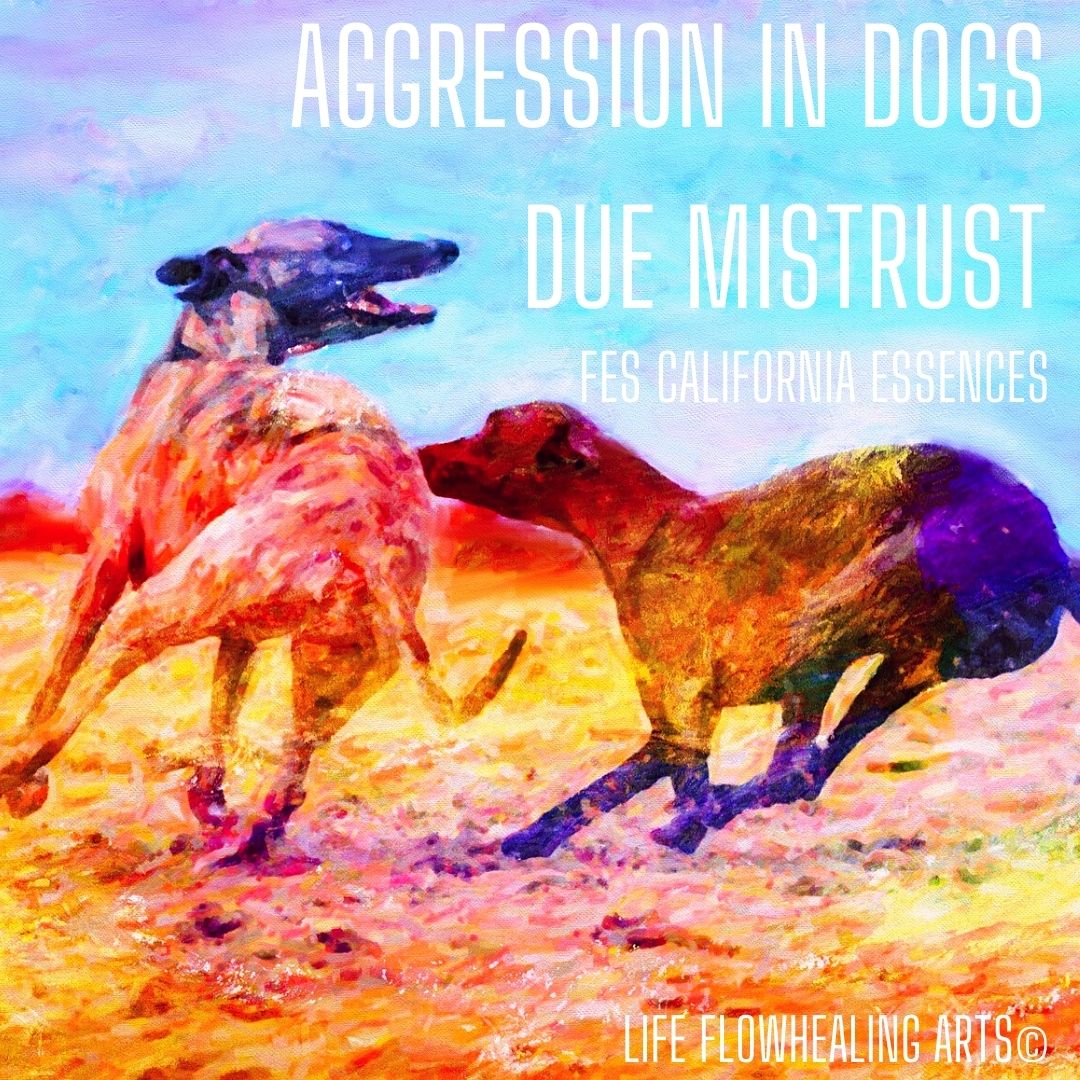
Since 2014 when I started working with dogs and flower essences, I have not stopped reading books, watching videos and attending talks about our furry friends in order to understand them better and therefore have more knowledge on how and which flower essences work for them.
Some years ago thanks to Raquel from raquel_losmundosdearya, quality dog walking in the province of Barcelona, I got to know Jose from labrujulacanina and his approach to the theory of the 4 legs in a dog.
This webinar opened up a new way of working with flower essences with furry pets. With these 4 essential factors in mind, it is not only easier to assess the essences, but it also allows the creation of work structure.
If you would like to know more about this theory I invite you to watch the Youtube video of la brújula canina see the link below, or read their blog pòst.
http://labrujulacanina.com/la-teoria-las-4-patas/
This theory, to simplify, means that each leg of the dog represents a fundamental pillar in the dog’s life, just like the 4 legs of a chair that provides the perfect balance to carry out its function. They are then 4 pillars that provide essential information about how your dog behaves and why.
The pillars or legs are as follows;
Genetics
Experiences
Referent
Environment
As José from La brujula Canina comments, the first 2 legs, the front ones, are the “Genetics” and the “Experiences” they are 2 fixed pillars.
“Genetics” determines what species we are, what breed we are, what family we belong to and this is what is at the base and will influence the behaviour of the dog throughout its life. This is a fixed leg that cannot be changed, if they are fearful, calm, nervous at the base we can only help them to change the perception they have but we cannot change the genetic structure.
It is in this way how this paw influences that in the book Patricia McConnell for the love of a dog, where she explains a case of dogs that were so fearful that even with the best trainers and ethologists they could not help them to lose this fear and they could not be touched by humans in their whole life.
The front leg of “Experiences” is another pillar that cannot be changed in the present, it represents the experiences from birth to today that will influence them throughout their lives. It is therefore important that the window of socialisation from birth to 3 months of age, (when it is most able to learn), to be exposed to the widest variety of situations and stimulation.
This factor cannot be modified as I have mentioned above, but we can help to change the perception of these circumstances, which are usually traumatic events, negative situations.
Following this, we will talk about the back legs which represent the pillars of “Environment”and social “Referent” which are factors of the present and are therefore able to be modified. First of all, we will talk about the social “Referent”, which is not the owner, as dogs do not understand ownership, for them it is the person who matters and many times it represents the whole family.
We can influence a lot if we try to be calm and relaxed referent to the dog, so that the dog can trust us in problematic circumstances.
The last back leg from is the “Environment” we can influence in the environment from our dog so its “present” and therefore modifiable.
If we have a dog with the same genetics, the same social reference and the same experiences, in a different environment can have a positive or negative influence towards this dog.
We need to create positive circumstances for our dog to live a a fulfilling life and not create chronic stress.
Working with these 4 factors is a holistic vision which allows us to understand what can be changed and what cannot, to understand the reality of our dog and therefore to know that you cannot wish for something from your dog that he can not offer, that can only create a common life of frustration. By understanding this vision helps for a positive and complete life together.
It would be vital to grasp this concept in order to understand that even though we can hardly change “Genetics” and “Experiences” in a dog. We can help him to change his perception “towards”. Obviously the caregiver must work very well on the 2 other pilars from the back “Environment” to which he exposes the dog, and also work on our aspect to be and excelent social “Referent”, transmitting calmness and support.
If we focus the essences to work on the first 2 pillars “Genetics” and “Experiences”, we can achieve better and longer lasting results, however, when the caretaker exposes the “genetically fearful” dog, and if additional the dogs circumstances in his past “Experiences” has been negative towards humans, “fearfull experiences”.
And we present the dog in a stressful environment of noise and commotion, and confront him daily with various people who want to touch him, we won’t get the same results.
In other words, flower therapy on a dog is firmly linked to the behaviour of the caretaker projected onto the dog and the circumstances to which the dog is exposed.
In my experience I have had better results with dogs if I have focussed the flower essences on the structure of the dog thus “Genetics” and ” Experience” with some supporting essences on the hind legs which are “Referent” and “Environment”.
Than on essences from the 2 back pilars the “environment” and on their “referent” that will not work on the basis of the circumstances.
It is true that without a suitable reference and appropriate circumstances for each dog, we limit the effectiveness of the essences.
If you use this vision in flower therapy with dogs or if you have another system, I would like to read your comments.
well, all comments are welcome 😉
Thank you for reading me.
Joyce



